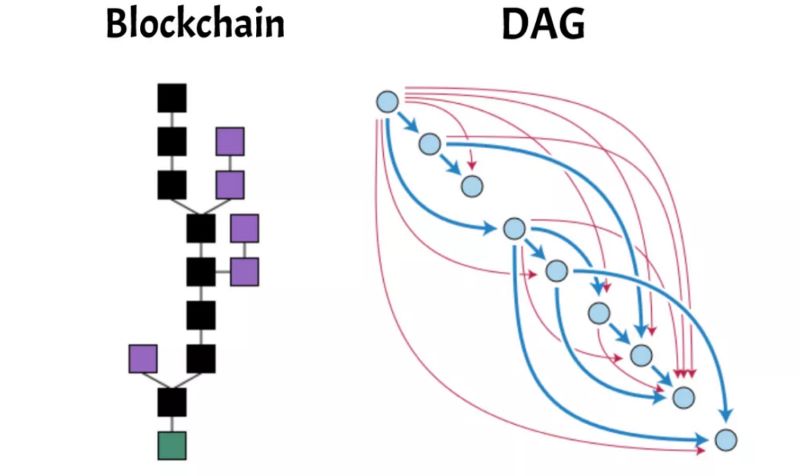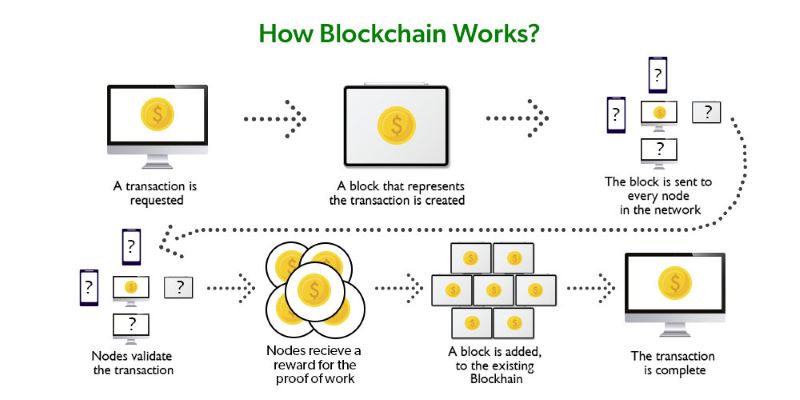Tired of slow blockchain transactions? DAG based blockchains are the future of speed and scalability. Discover how this revolutionary technology is transforming the way we think about decentralized ledgers. Click now to learn more!
Directed Acyclic Graphs (DAGs)
Directed Acyclic Graphs (DAGs) are data structures with a unique one-way flow of information, gaining prominence in various fields, especially blockchain technology. In blockchain, DAGs offer an alternative structure where transactions confirm each other, creating a web-like network instead of a linear chain.
This alternative structure has the potential to improve scalability, efficiency, and flexibility compared to traditional blockchains. However, challenges remain in ensuring security, achieving widespread adoption, and integrating with existing blockchain systems. Despite these hurdles, DAGs represent a promising avenue for innovation in the blockchain space, offering potential solutions to existing limitations.
How does blockchain work?
Blockchain is a distributed ledger technology that can record and store data in a publicly-viewable, immutable chain. Among their many functions, traditional blockchain networks enable users to send tokens from one wallet to another. In most cases, each new transaction is validated by global network nodes that record transactions. The nodes confirm the transaction is valid by comparing the information against the transaction history.
Blockchains use two primary consensus algorithms to approve and validate transactions. Some networks use a proof-of-stake (POS) consensus that lets network members lock their funds (which is their stake) to “double-check” the confirmed transaction before adding a new block. Some networks use a proof-of-work (POW) consensus mechanism, resulting in higher fees and energy usage.
The chunks of immutable data stored in the blockchain database are known as blocks. Blocks contain information about numerous existing transactions and can be viewed by anyone at any time. Transactions with higher fees are usually prioritized over those with lower fees if the blockchain uses the POW consensus mechanism.
Blockchain is often used for decentralized finance, but the technology has countless applications. For example, it can be used to track physical goods in each phase of the supply chain. Additionally, blockchains that support smart contracts have numerous medical use cases, such as insurance claim processing and patient data storage.
How are directed acyclic graphs used in blockchain?
Directed Acyclic Graphs (DAGs) are used in blockchain technology as an alternative data structure to the traditional blockchain. In a traditional blockchain, transactions are grouped into blocks, and these blocks are linked together in a linear, chronological chain. However, in a DAG-based blockchain, transactions are represented as vertices (nodes) in the graph, and each new transaction confirms one or more previous transactions by directly referencing them. This creates a web-like structure instead of a linear chain.
DAG-based systems in blockchain technology offer potential benefits such as improved scalability, with faster transaction confirmation times due to concurrent processing without the need for block mining. They also promise increased energy efficiency by eliminating energy-intensive proof-of-work mechanisms. Additionally, DAGs provide greater flexibility in transaction ordering and validation, enabling innovative consensus approaches. However, challenges remain in ensuring security due to the lack of a linear structure, achieving wider adoption due to the technology’s novelty, and integrating with existing blockchain infrastructure.
DAG Based blockchains
DAG-based blockchains represent a significant departure from the traditional blockchain architecture, offering a promising solution to the scalability and efficiency challenges that have long plagued the technology. Unlike traditional blockchains, which rely on a linear chain of blocks, DAG-based systems utilize a directed acyclic graph structure, where each transaction confirms multiple previous transactions, creating a web-like network of interconnected nodes.
This innovative structure eliminates the need for miners to compete for block creation, resulting in faster transaction confirmation times and higher throughput. Moreover, the absence of energy-intensive mining processes makes DAG-based blockchains more energy-efficient and environmentally friendly.
Several prominent projects, such as IOTA, Nano, and Hedera Hashgraph, have embraced DAG-based architectures to achieve remarkable scalability and transaction speeds. These projects are pushing the boundaries of what’s possible in the blockchain space, demonstrating the potential of DAGs to revolutionize industries like supply chain management, micropayments, and the Internet of Things (IoT).

However, DAG-based blockchains are not without their challenges. Ensuring security and achieving consensus in a non-linear structure requires innovative approaches and ongoing research. Additionally, the relative novelty of DAG-based systems means that their long-term viability and security are still being tested.
Despite these challenges, the potential benefits of DAG-based blockchains are undeniable. As the technology continues to mature and evolve, it is poised to play a significant role in the future of decentralized systems, offering a scalable, efficient, and sustainable alternative to traditional blockchains.
DAG-based blockchains are a game-changer, offering a faster, more scalable, and efficient alternative to traditional blockchains. Stay ahead of the curve and explore the potential of DAGs in reshaping the blockchain landscape.
Subscribe to the Blockchain Bulletin Weekly newsletter for in-depth analysis, expert insights, and exclusive content on the latest developments in DAG-based blockchains and other cutting-edge blockchain technologies.

